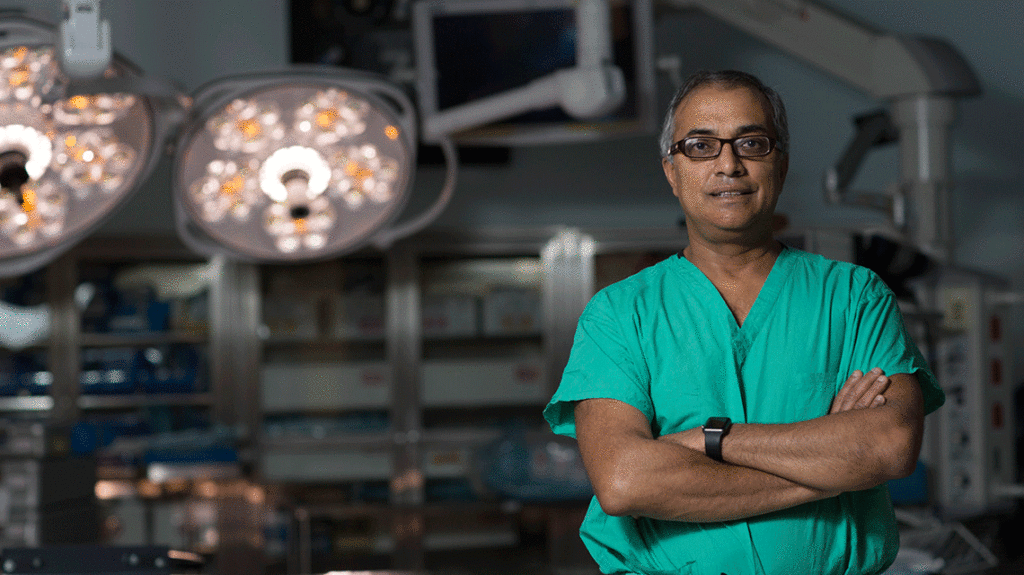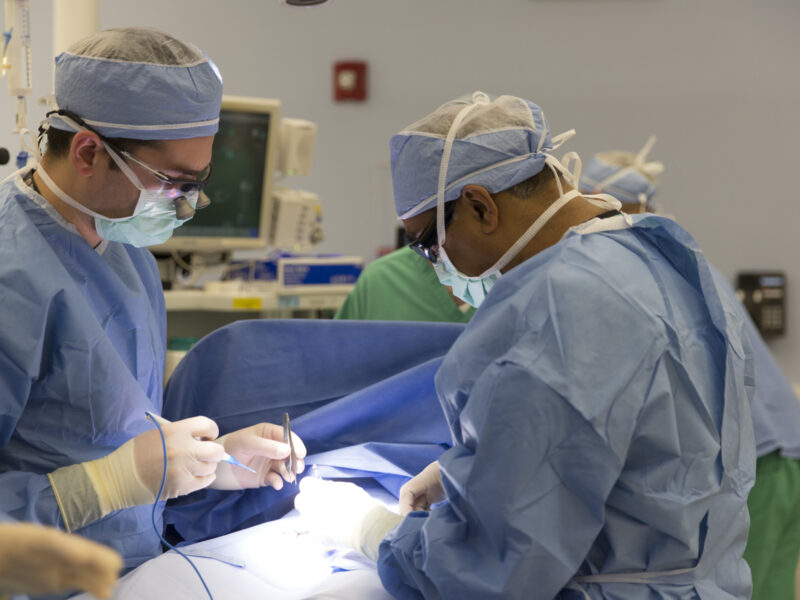Do Surgical Outcomes Differ Between Minimally Invasive Pyeloplasty Procedures in Treating Ureteropelvic Junction Obstruction?
Do Surgical Outcomes Differ Between Minimally Invasive Pyeloplasty Procedures in Treating Ureteropelvic Junction Obstruction? https://pediatricsnationwide.org/wp-content/uploads/2020/12/031716BS561G-jayanthi-header-1024x575.gif 1024 575 JoAnna Pendergrass, DVM JoAnna Pendergrass, DVM https://pediatricsnationwide.org/wp-content/uploads/2021/03/pendergrass_01.jpg- December 10, 2020
- JoAnna Pendergrass, DVM

Minimally invasive pyeloplasty has become increasingly popular over open dismembered pyeloplasty, the traditional treatment for ureteropelvic junction obstruction.
Robotic-assisted pyeloplasty (RALP) and laparoscopic pyeloplasty (LP) are minimally invasive procedures that produce smaller scars and less postoperative pain. These are advantages that appeal to parents of patients undergoing these procedures.
In a recent Journal of Pediatric Urology publication, Rama Jayanthi, MD, and his research team reported the surgical outcomes of RALP and LP in patients being treated for ureteropelvic junction obstruction.
Study findings demonstrated no significant differences in surgical outcomes between the procedures.
RALP has outpaced LP in popularity, given RALP’s rapid learning curve. “Pure laparoscopic suturing is difficult to learn,” says Dr. Jayanthi, Chief of the Section of Pediatric Urology at Nationwide Children’s Hospital.
A conversation that Dr. Jayanthi had with a surgeon at a recent European Pediatric Urology meeting served as the study’s impetus. He says the surgeon, an experienced pediatric urologist, was concerned about whether he was providing his patients with the best possible care by performing LP instead of RALP.
Outside of Nationwide Children’s, very few hospitals routinely perform both procedures. “We had a unique opportunity to try to answer the question about surgical outcomes between RALP and LP,” explains Dr. Jayanthi.
For this retrospective study, Dr. Jayanthi and his team reviewed the medical records of 234 patients who underwent RALP (n=119) or LP (n=115) between 2007 and 2018 at Nationwide Children’s. RALP was performed by seven surgeons with 1 to 8 years’ experience performing RALP. LP was performed by only one surgeon, who had 16 years’ experience performing LP.
Surgical outcomes that were evaluated included operative time, length of postoperative hospital stay and postoperative complication rates.
RALP took approximately 30 minutes longer to perform than LP. This time difference was statistically significant but not clinically meaningful.
The mean length of postoperative stay did not differ between the groups (1.2 days for RALP, 1.5 days for LP).
Using very broad definitions of what constitutes a complication, 52 patients across both groups experienced complications, but the complication rates between the groups did not differ (23.5% for RALP, 20.9% for LP).
Complications ranged from Clavien I to Clavien III. Clavien I complications included unplanned clinic visits for nausea.
Clavien III complications consisted of unplanned secondary procedures, such as early JJ stent removal to treat uncontrolled stent colic in the RALP group and nephrostomy tube placement to treat a postoperative urine leak in the LP group. Rates of Clavien III complications were similar to those in other reports of LP/RALP.
The equivalence in surgical outcomes between RALP and LP should assure surgeons who may not have access to robotic surgical technology, says Dr. Jayanthi. Those who are adept at LP are offering the same standard of care as those offering RALP.
The study’s findings also benefit surgeons with less experience in minimally invasive pyeloplasty. “Robotic-assisted surgery allows new trainees who are early in the careers to offer the same level of care and achieve the same outcomes as more experienced surgeons,” emphasizes Dr. Jayanthi.
The Urology Team at Nationwide Children’s are strong proponents of robot assisted surgery, he says, extending its use to more complex surgical procedures — bladder neck reconstruction, bladder augmentations, and appendicovesicostomies, for example —that cannot be performed with pure laparoscopy.
Reference:
Ebert KM, Nicassio L, Alpert SA, Ching CB, Dajusta DG, Fuchs ME, McLeod DJ, Jayanthi VR. Surgical outcomes are equivalent after pure laparoscopic and robotic-assisted pyeloplasty for ureteropelvic junction obstruction. Journal of Pediatric Urology. Sep 2020.
Image credit: Nationwide Children’s
About the author
JoAnna Pendergrass, DVM, is a veterinarian and freelance medical writer in Atlanta, GA. She received her veterinary degree from the Virginia-Maryland College of Veterinary Medicine and completed a 2-year postdoctoral research fellowship at Emory University’s Yerkes Primate Research Center before beginning her career as a medical writer.
As a freelance medical writer, Dr. Pendergrass focuses on pet owner education and health journalism. She is a member of the American Medical Writers Association and has served as secretary and president of AMWA’s Southeast chapter.
In her spare time, Dr. Pendergrass enjoys baking, running, and playing the viola in a local community orchestra.
-
JoAnna Pendergrass, DVMhttps://pediatricsnationwide.org/author/joanna-pendergrass-dvm/
-
JoAnna Pendergrass, DVMhttps://pediatricsnationwide.org/author/joanna-pendergrass-dvm/
-
JoAnna Pendergrass, DVMhttps://pediatricsnationwide.org/author/joanna-pendergrass-dvm/
-
JoAnna Pendergrass, DVMhttps://pediatricsnationwide.org/author/joanna-pendergrass-dvm/
- Post Tags:
- Pediatric Surgery
- Urology
- Posted In:
- In Brief










